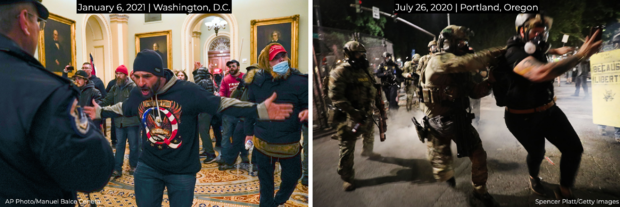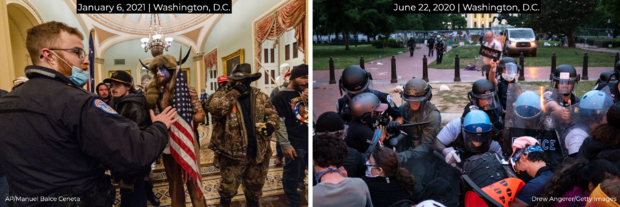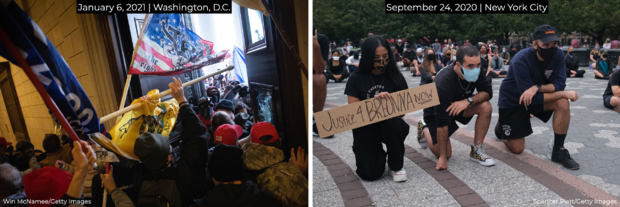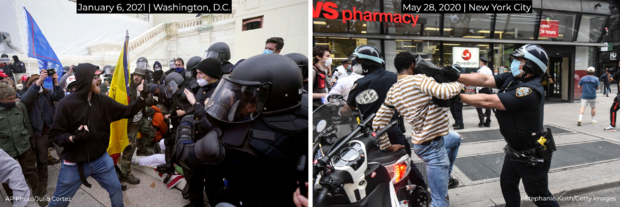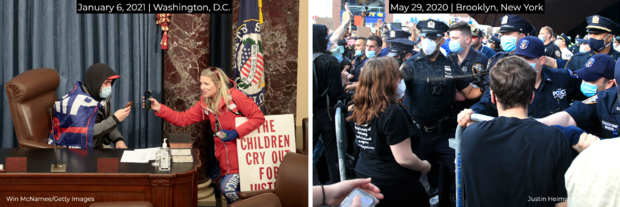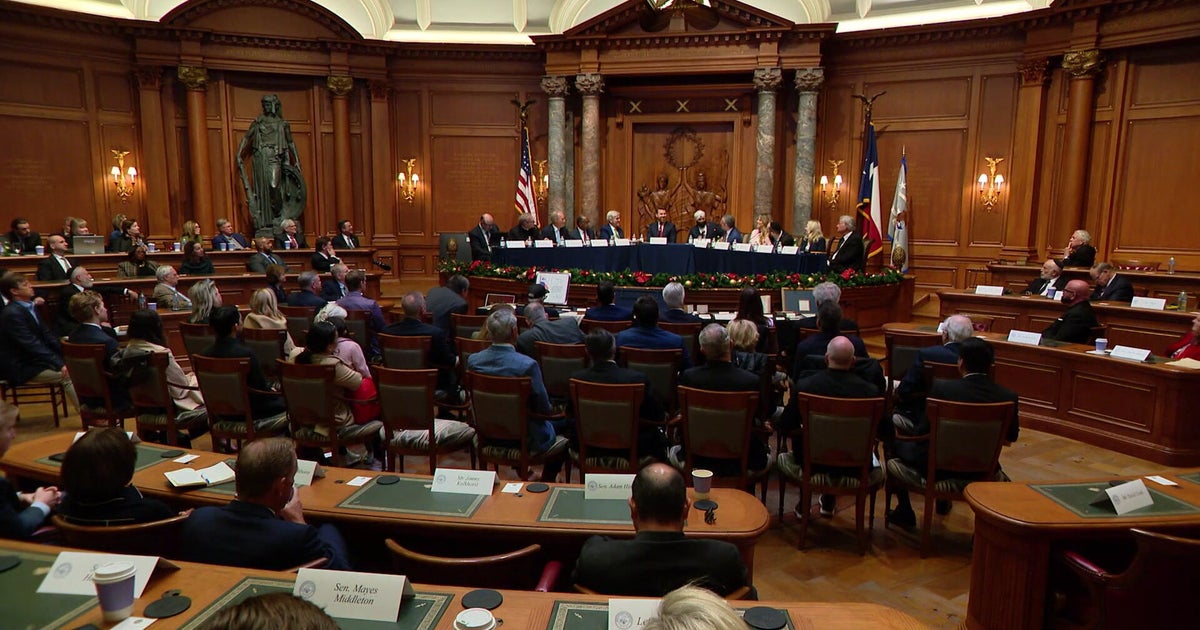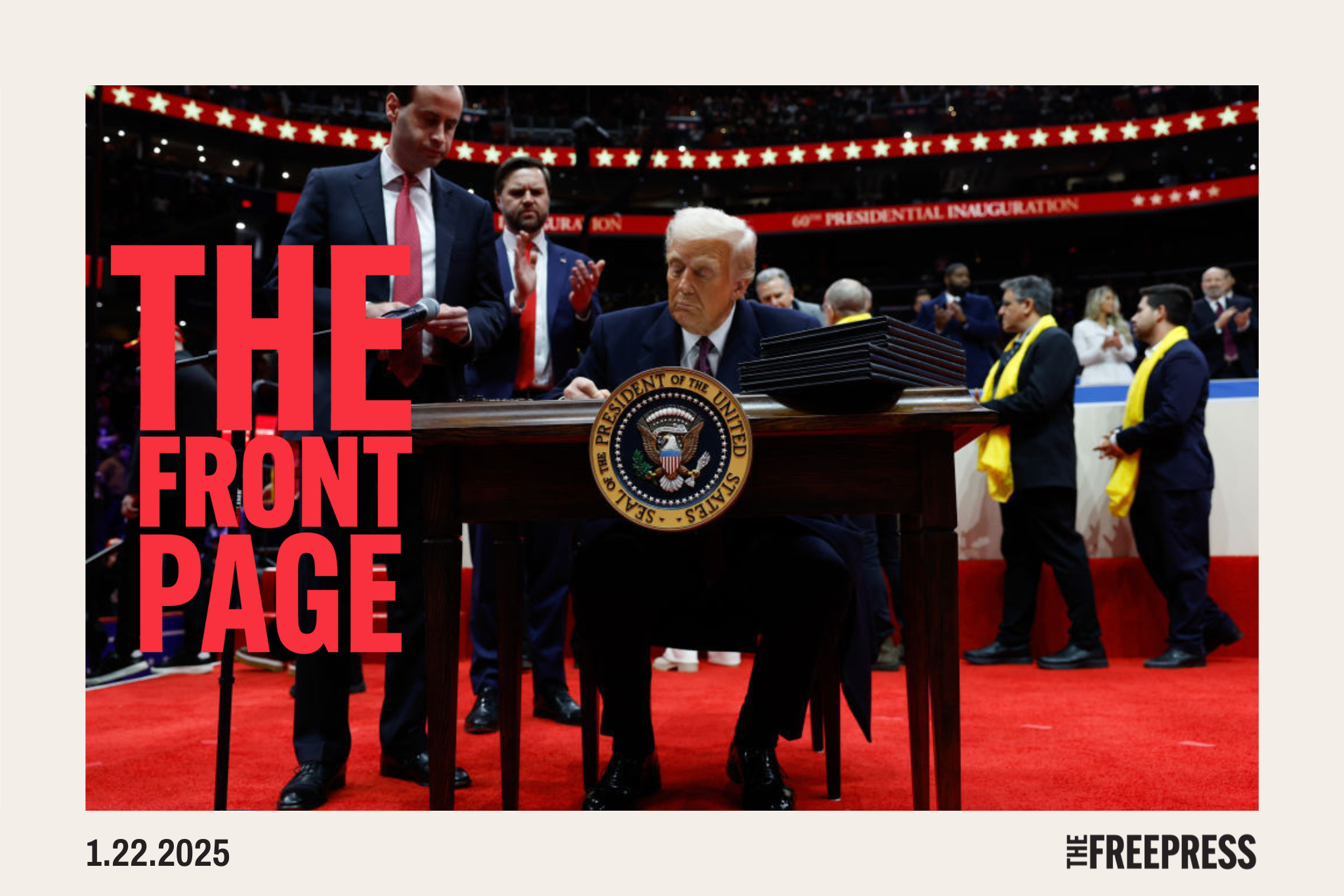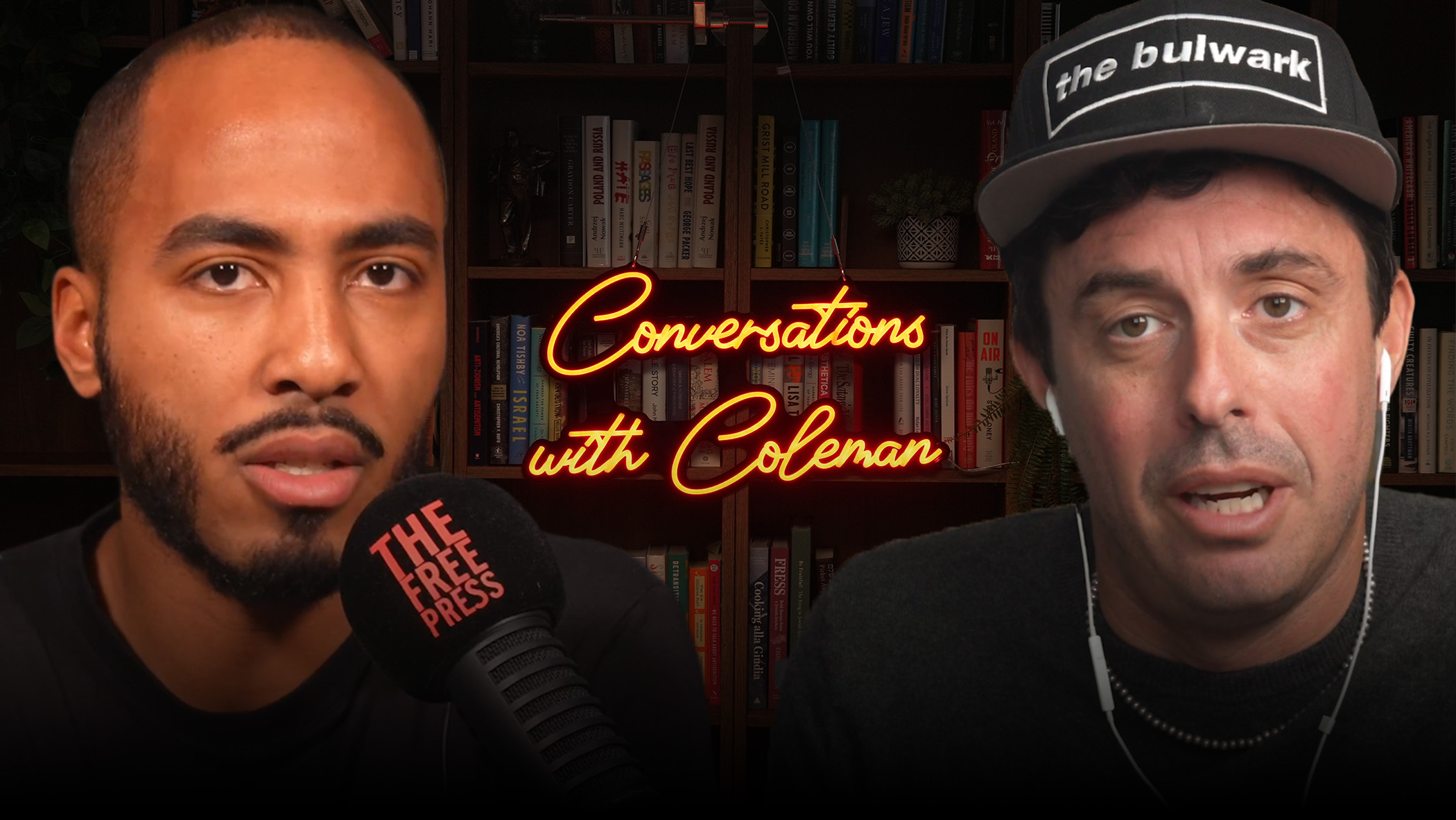Photos show difference in police response to anti-racism protests and the siege at the U.S. Capitol
When Congress meets to certify presidential elections, it's normally ceremonial and smooth. Wednesday was anything but when lawmakers gathered to count electoral votes from November's balloting.
The session was met with chaos as supporters of President Trump stormed the Capitol, forced buildings into lockdown and infiltrated offices and chambers. As videos and images emerged of the protest-turned-riot, a picture came into focus of how the assault was handled — and how that contrasted with the management of the racial injustice protests that swept through the nation during many of the months before.
Around 2 p.m., protesters made their way inside the Capitol building, where Congress was meeting to finish counting the electoral votes. The process was halted and the building was put under lockdown as Trump supporters broke windows and attempted to force their way inside.
Congressional members were evacuated and soon after, demonstrators ransacked offices and the Senate chamber. Photos show many of them stealing documents and artifacts from the building, including a podium.
It took hours for the National Guard to be deployed to the scene.
At day's end, Metro D.C. police reported that four people died during the chaos, including one woman who was shot by police. She was later identified as Ashli Babbitt. Police said the employee who shot Babbitt has been placed on administrative leave pending the result of an investigation.
More than 52 people were arrested, most for violations related to a 6 p.m. curfew imposed by D.C. Mayor Muriel Bowser.
While police did deploy tear gas and hold the line against rioters in some instances, many images appeared to show officers communicating peacefully with protesters, some even taking selfies with them, and declining to use violent tactics. As a result, they faced criticism for taking a less aggressive stance than they did towards Black Lives Matter protesters over the summer.
Bowser on Thursday called the response from Capitol Police a failure and called for an investigation into the apparent disparity. "We must also understand why the federal law enforcement response was much stronger during the Black Lives Matter protests," Bowser said.
President-elect Joe Biden released a similar sentiment, saying that the rioters should not be called protesters, but "domestic terrorists."
"No one can tell me that if it had been a group of Black Lives Matter protesting yesterday, they wouldn't have been treated very, very differently than the mob of thugs that stormed the Capitol," Biden said. "We all know that's true, and it is unacceptable."
Earlier Thursday, Capitol Police Chief Steven Sund defended his department's actions, saying "law enforcement partners responded valiantly when faced with thousands of individuals involved in violent riotous actions as they stormed the United States Capitol Building." Hours later, he resigned, a spokesperson said.
The siege occurred after months marked by racial injustice protests, some of which were marred by violence.
At least 771 people were killed by police in the first eight months of 2020. Roughly 21% of them were Black — a statistic that played a large part in the nationwide outrage.
Thousands of people spent months demonstrating against racial injustice, and CBS News and its affiliates reported on dozens of instances of people getting injured, sometimes fatally, in interactions with police while doing so. Many officials criticized the protests, including Mr. Trump, who insisted some of protesters were "thugs."
Here's a look at how police responded to Wednesday's siege at the Capital and the Black Lives Matter protests of 2020.
On Wednesday, Trump supporters breached the U.S. Capitol and entered the Senate chamber, despite police presence outside the building.
On July 26 last year, federal police pulled down a protester in Portland, Oregon, who was then arrested, according to a photographer who witnessed it. The incident occurred after 56 straight days of demonstrations in the area as people protested the death of George Floyd on May 25.
On Wednesday, an officer was seen calmly coaxing back Trump supporters who had broken into the U.S. Capitol.
On June 22, 2020 in Washington, D.C., racial injustice protesters clashed with U.S. Park Police after they attempted to pull down a statue of Andrew Jackson.
A large group of Trump backers broke into the U.S. Capitol on Wednesday after growing violent as they protested the results of the presidential election.
People in New York City gathered peacefully on September 24, 2020 to protest the Kentucky grand jury's decision to only charge one Louisville Metro Police officer of the several involved in the fatal shooting of Breonna Taylor. At that protest, and many others, protesters kneeled to peacefully protest the decision.
After breaking into the Capitol, Trump supporters entered the Senate chamber on Wednesday, where they searched through documents, went through desks and took photos.
When protesters gathered in Rochester, New York, in a demonstration over the death of Daniel Prude roughly four months earlier, they were met with dozens of officers in riot gear.
A police officer at the U.S. Capitol helped one of the protesters on Wednesday who had been impacted by chemical agents that police used to try to disperse crowds.
In Washington, D.C. on June 22 last year, a woman holds her eyes and screams after being hit with pepper spray as U.S. Park Police stand behind her. Racial justice protesters had previously attempted to pull down a statue of Andrew Jackson near the White House.
Trump supporters who took part in the siege of the U.S. Capitol stole items from the building. This man took House Speaker Nancy Pelosi's lectern and carried it through the building's Rotunda as he smiled and waved to photographers.
Following an incident in which a police officer shot Jacob Blake seven times in the back, police in Kenosha, Wisconsin, set up an armed perimeter around the Kenosha County Courthouse.
Some Trump supporters who were in Washington, D.C. on January 6 to protest the results of the election formed a mob that scaled and stormed the U.S. Capitol.
Soon after George Floyd's death, police pointed guns at protesters at protesters laying on the ground.
As the electoral college protest became more violent on Wednesday, Trump supporters confronted police and attempted to break through a barrier before they eventually stormed the Capitol building.
Just days after George Floyd's death, protesters in New York clashed with police during a May 28 protest.
Many of the Trump supporters who stormed the Capitol building gathered in the Senate Chamber to search through desks and documents and take photos of their destruction.
In Brooklyn, New York, on May 29 last year, police officers sprayed tear gas at demonstrators who were protesting the police killing of George Floyd just days earlier in Minneapolis.
